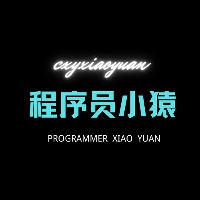LeetCode刷题实战40:组合总和 II
LeetCode刷题实战40:组合总和 II

算法的重要性,我就不多说了吧,想去大厂,就必须要经过基础知识和业务逻辑面试+算法面试。所以,为了提高大家的算法能力,这个公众号后续每天带大家做一道算法题,题目就从LeetCode上面选 !
今天和大家聊的问题叫做 组合总和 II,我们先来看题面:
https://leetcode-cn.com/problems/combination-sum-ii/
Given a collection of candidate numbers (candidates) and a target number (target), find all unique combinations in candidates where the candidate numbers sums to target. Each number in candidates may only be used once in the combination. Note: All numbers (including target) will be positive integers. The solution set must not contain duplicate combinations.
题意
给定一个数组 candidates 和一个目标数 target ,找出 candidates 中所有可以使数字和为 target 的组合。
candidates 中的每个数字在每个组合中只能使用一次。
说明:
所有数字(包括目标数)都是正整数。
解集不能包含重复的组合。
样例
示例 1:
输入: candidates = [10,1,2,7,6,1,5], target = 8,
所求解集为:
[
[1, 7],
[1, 2, 5],
[2, 6],
[1, 1, 6]
]
示例 2:
输入: candidates = [2,5,2,1,2], target = 5,
所求解集为:
[
[1,2,2],
[5]
]题解
回溯算法 + 剪枝
本题解答作者:liweiwei1419 https://leetcode-cn.com/problems/combination-sum-ii/solution/hui-su-suan-fa-jian-zhi-python-dai-ma-java-dai-m-3/
这道题与上一问的区别在于:
第 39 题:candidates 中的数字可以无限制重复被选取;
第 40 题:candidates 中的每个数字在每个组合中只能使用一次。
相同点是:相同数字列表的不同排列视为一个结果。
如何去掉重复的集合(重点)
为了使得解集不包含重复的组合。有以下 2 种方案:
- 使用 哈希表 天然的去重功能,但是编码相对复杂;
- 这里我们使用和第 39 题和第 15 题(三数之和)类似的思路:不重复就需要按 顺序 搜索, 在搜索的过程中检测分支是否会出现重复结果 。注意:这里的顺序不仅仅指数组 candidates 有序,还指按照一定顺序搜索结果。


由第 39 题我们知道,数组 candidates 有序,也是 深度优先遍历 过程中实现「剪枝」的前提。
将数组先排序的思路来自于这个问题:去掉一个数组中重复的元素。很容易想到的方案是:先对数组 升序 排序,重复的元素一定不是排好序以后相同的连续数组区域的第 1 个元素。也就是说,剪枝发生在:同一层数值相同的结点第 2、3 ... 个结点,因为数值相同的第 11 个结点已经搜索出了包含了这个数值的全部结果,同一层的其它结点,候选数的个数更少,搜索出的结果一定不会比第 1个结点更多,并且是第 1个结点的子集。(说明:这段文字很拗口,大家可以结合具体例子,在纸上写写画画进行理解。)
代码如下:
import java.util.ArrayDeque;
import java.util.ArrayList;
import java.util.Arrays;
import java.util.Deque;
import java.util.List;
public class Solution {
public List<List<Integer>> combinationSum2(int[] candidates, int target) {
int len = candidates.length;
List<List<Integer>> res = new ArrayList<>();
if (len == 0) {
return res;
}
// 关键步骤
Arrays.sort(candidates);
Deque<Integer> path = new ArrayDeque<>(len);
dfs(candidates, len, 0, target, path, res);
return res;
}
/**
* @param candidates 候选数组
* @param len 冗余变量
* @param begin 从候选数组的 begin 位置开始搜索
* @param target 表示剩余,这个值一开始等于 target,基于题目中说明的"所有数字(包括目标数)都是正整数"这个条件
* @param path 从根结点到叶子结点的路径
* @param res
*/
private void dfs(int[] candidates, int len, int begin, int target, Deque<Integer> path, List<List<Integer>> res) {
if (target == 0) {
res.add(new ArrayList<>(path));
return;
}
for (int i = begin; i < len; i++) {
// 大剪枝:减去 candidates[i] 小于 0,减去后面的 candidates[i + 1]、candidates[i + 2] 肯定也小于 0,因此用 break
if (target - candidates[i] < 0) {
break;
}
// 小剪枝:同一层相同数值的结点,从第 2 个开始,候选数更少,结果一定发生重复,因此跳过,用 continue
if (i > begin && candidates[i] == candidates[i - 1]) {
continue;
}
path.addLast(candidates[i]);
// 调试语句 ①
// System.out.println("递归之前 => " + path + ",剩余 = " + (target - candidates[i]));
// 因为元素不可以重复使用,这里递归传递下去的是 i + 1 而不是 i
dfs(candidates, len, i + 1, target - candidates[i], path, res);
path.removeLast();
// 调试语句 ②
// System.out.println("递归之后 => " + path + ",剩余 = " + (target - candidates[i]));
}
}
public static void main(String[] args) {
int[] candidates = new int[]{10, 1, 2, 7, 6, 1, 5};
int target = 8;
Solution solution = new Solution();
List<List<Integer>> res = solution.combinationSum2(candidates, target);
System.out.println("输出 => " + res);
}
}好了,今天的文章就到这里,如果觉得有所收获,请顺手点个在看或者转发吧,你们的支持是我最大的动力。
上期推文:
